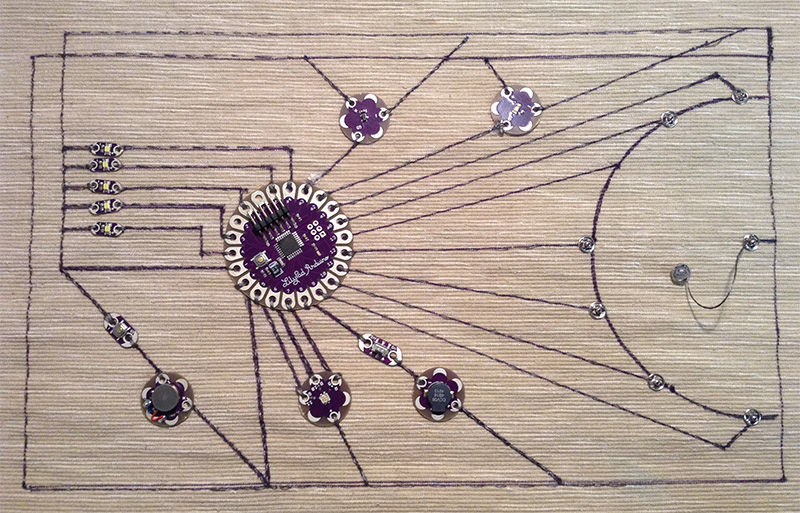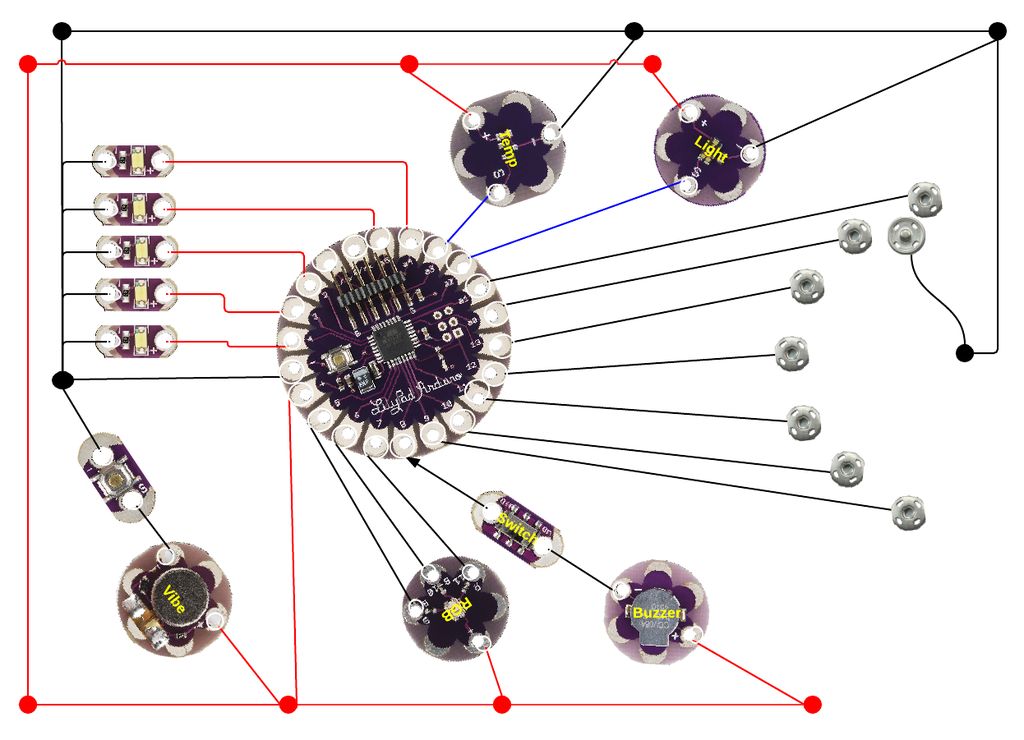This tutorial shows you how to create a sensor demo mat for the LilyPad Arduino. I wanted a place where I could experiment with the different sensors, but also something that I could use to show examples of what can be done without constantly uploading code.
Step 1: Step 1: Supplies
To complete this project I used the following:
- 1 x LilyPad 328 Main Board
- 1 x ProtoSnap – LilyPad Development Board which includes the following:
- 7 x sewable snaps
- 1 x Piece of fabric big enough to hold all of the sensors
- 1 x Fabric Marking pen (I used a Dritz Mark B Gone marking pen which can be found online, at many craft stores, or even stores like Wal-mart)
Although I had the LilyPad Development Board, I decided to use the LilyPad SImple Board so I could use the extra pins as switches.
Step 2: Step 2: The Circuit Diagram
Before beginning any project it is good to take the time to think everything through. I put images of the different sensors and components into lucidchart.com and played around with the placement of the sensors to find an arrangement that wouldn’t just work, but one I also found to be aesthetically pleasing.
Step 3: Step 2: Sensor Placement
Based on the diagram, I arranged all of the sensors and switches onto the fabric. I used the marking pen to indicate where each pin and component would be placed. A dot inside the pin hole was enough to let me know where each component would go.
Step 4: Step 4: Draw the Circuits
I removed the sensors and used the marking pen to draw the circuit onto the fabric. I used a ruler to make sure all of my lines were straight. The nice thing about a pen like a Dritz Mark B Gone is that the ink disappears when it gets wet which allows you to erase your lines with a damp rag if you need to make changes.
When I had the lines drawn, I again placed the sensors on the mat to make sure that everything lined up the way I wanted it to. I ended up changing the position of the RGB light slightly so the lines were less likely to make contact with the other pins on the LilyPad.
I wanted the lines to be part of the final piece so, once I was satisfied with the diagram, I traced the lines with a permanent marker. If I did it over, I would probably color code the lines so that it can be better used to explain how the circuit works.
Step 5: Step 5: Clean off the Marking Pen
I soaked the fabric in water and then let it dry overnight to remove the blue marking pen marks from the fabric before I started sewing.
Step 6: Step 6: Stitch on the Sensors and Other Components (optional)
To ensure that the sensors stayed put while I sewed the circuits, I did a quick stitch with plain thread to hold the components in place.
For more detail: LilyPad Arduino Sensor Demo Mat


